

Tumeric's Healing Powers. To say Tom Newmark is passionate about turmeric is an understatement.

He’s farmed the herbaceous plant to understand its inner workings. He’s traveled the globe to meet with researchers studying how it affects the inner workings of the body. It’s all been in an effort to confirm what people for thousands of years have believed: that turmeric is good for you. Very good for you. “Ours is not a casual fascination with turmeric,” says Newmark, chief executive officer of New Chapter, makers of organic, natural health supplements.
Curcumin (the chemical ingredient responsible for the turmeric root’s orange pigment) and turmerones (its oils) are believed to slow the progress of Alzheimer’s disease; prevent the spread of certain types of cancer (prostate, breast, colon); promote wound healing; alleviate arthritis and inflammation; and enhance liver detoxification. Take India. Welcome to NaturalNews Store - The Official Health Ranger Recommended Product Store. 18 of Nature’s Most Powerful Medicinal Plants. (Part of an Exclusive WebEcoist Series on Amazing Trees, Plants, Forests and Flowers) From marijuana to catnip, there are hundreds of remarkably common herbs, flowers, berries and plants that serve all kinds of important medicinal and health purposes that might surprise you: anti-inflammatory, anti-fungal, insect repellent, antiseptic, expectorant, antibacterial, detoxification, fever reduction, antihistamine and pain relief.
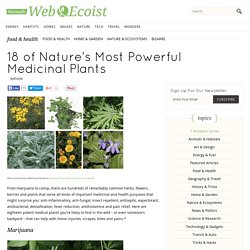
Here are eighteen potent medical plants you're likely to find in the wild – or even someone's backyard – that can help with minor injuries, scrapes, bites and pains.* Marijuana Images via Current and Street Knowledge Seriously. Remove Toxic Heavy Metals from the Body in 5 - 7 Hours. By Gavin Bragg Guest Writer for Wake Up World The safe removal of heavy metals is becoming one of the modern world’s greatest health issues.
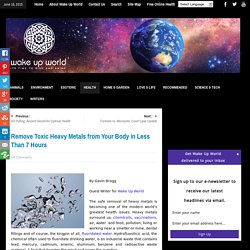
What is Good Nutrition? Nutrition is such a confusing topic!

People are confused about what to eat, more than almost any other topic. It’s not your fault! You’ve been brainwashed seventeen ways from Sunday, by a variety of “food cults” with a profit motive. Low fat, low carb, what’s next? I predict a low-protein obsession. The Ultimate Craving - How Industry Designs Food to be as Addictive as Narcotics. By Carolanne Wright Contributing Writer for Wake Up World It’s not surprising that processed foods are designed to foster addictive behavior — robbing us of our health, serenity and hard-earned cash.

Sugar, fat, salt and artificial flavors are manipulated in such a way that after one taste, consumers just cannot help themselves and a vicious cycle begins. How Bad Is Junk Food For Your DNA? By Raluca Schachter Guest writer for Wake Up World If we all dropped dead after eating junk food, the message would have been loud and clear: DO NOT INGEST! But this is one of the things we probably have to learn the hard way. Many people these days struggle through a long time of sickness, being plagued with low immunity, high toxicity, and a wide range of metabolic imbalances. Most likely they will have to leave this world in a hospital, after a long addiction to medical drugs and doctors. Top 11 Biggest Lies of Mainstream Nutrition. There is a lot of misinformation circling around in mainstream nutrition.
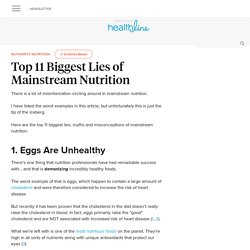
10 Things the Processed Food Industry Doesn't Want You to Know. By Donna Gates Guest Writer for Wake Up World Okay, they taste good… and they’re easy.
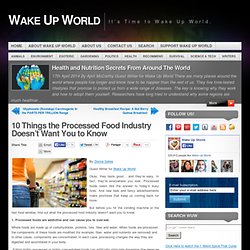
In fact, they’re everywhere you look. Processed foods seem like the answer to today’s busy lives. And new fads and fancy advertisements make promises that keep us coming back for more. But before you hit the vending machine or the fast food window, find out what the processed food industry doesn’t want you to know. 1. Whole foods are made up of carbohydrates, proteins, fats, fiber and water. Eating highly processed or highly concentrated foods can artificially stimulate dopamine (the pleasure neurotransmitter), which plays a role in addiction. A food addiction starts because you feel good when you are eating these foods and they make you think they taste better. 2. Additives in processed foods, like high fructose corn syrup, sugar and MSG have been linked to weight gain and obesity.[2]
The Eighteen Wonders of Wheatgrass. To an untrained eye, the blades of wheatgrass may look similar to the blades of any common lawn grass.
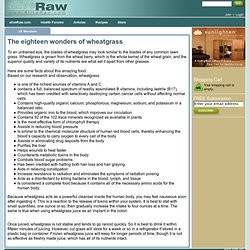
Wheatgrass is grown from the wheat berry, which is the whole kernel of the wheat grain, and the superior quality and variety of its nutrients are what set it apart from other grasses. Here are some facts about this amazing food. Based on our research and observation, wheatgrass is one of the richest sources of vitamins A and C contains a full, balanced spectrum of readily assimilated B vitamins, including laetrile (B17), which has been credited with selectively destroying certain cancer cells without affecting normal cells. Contains high-quality organic calcium, phosphorous, magnesium, sodium, and potassium in a balanced ratio.
Because wheatgrass acts as a powerful cleanser inside the human body, you may feel nauseous soon after ingesting it. Eating Well Help Guide. What to Do When Zipcodes Predict Obesity Levels. Zipcodes are a good indicator of a person’s obesity level, claims Dr.
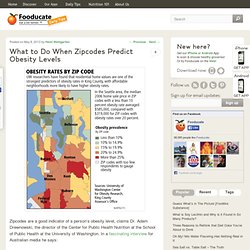
Adam Drewnowski, the director of the Center for Public Health Nutrition at the School of Public Health at the University of Washington. In a fascinating interview for Australian media he says: The socioeconomic dimension of the obesity epidemic becomes apparent once you start looking at maps where the obese people live…obesity rates in Seattle can vary by a factor of five depending on address…Obesity rates may be as low as 5 per cent or 2 per cent in one area and 20 or 30 per cent in another. It all had to do with address. This harsh truth exemplifies more than anything that obesity is a social and economic challenge to be dealt with by government agencies, and not solely by individuals. That’s because nutrient dense foods like fresh vegetables and fruit tend to be more expensive than calorie dense sugar-fat-salt combos that are manufactured from subsidized crops. Glycemic load. The glycemic load (GL) of food is a number that estimates how much the food will raise a person's blood glucose level after eating it.
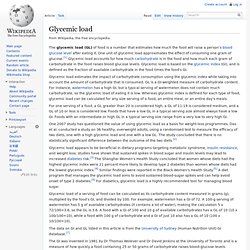
One unit of glycemic load approximates the effect of consuming one gram of glucose.[1] Glycemic load accounts for how much carbohydrate is in the food and how much each gram of carbohydrate in the food raises blood glucose levels. Glycemic load is based on the glycemic index (GI), and is defined as the fraction of available carbohydrate in the food times the food's GI. Glycemic load estimates the impact of carbohydrate consumption using the glycemic index while taking into account the amount of carbohydrate that is consumed.
Glycemic index. The GI represents the total rise in a person's blood sugar level following consumption of the food; it may or may not represent the rapidity of the rise in blood sugar. The steepness of the rise can be influenced by a number of other factors, such as the quantity of fat eaten with the food. The GI is useful for understanding how the body breaks down carbohydrates [2] and only takes into account the available carbohydrate (total carbohydrate minus fiber) in a food. Although the food may contain fats and other components that contribute to the total rise in blood sugar, these effects are not reflected in the GI.